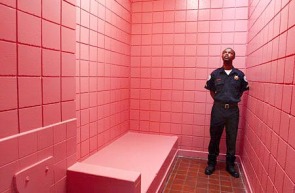Colour theory and colour therapy were linked to this and played out in the theories of the Bauhaus (More on all of this in a later post)
Colour in learning, though, is important. Experiments were done where students tried to learn from two sets of computers. One with the normal screen surround, and the other with the surrounds painted red. The students on the red painted screens recalled far less than their peers, due to the primitive fight or flight reflex kicking in.

What football teams are the most successful?
The ones who wear red! It makes you feel more powerful, and the opposition want to run away. It makes your heart pump faster; you have more energy and 'fight'. What colour were England wearing when we last won the World Cup?

And what about our armies? Surely wearing red would make us an easy target against our green and pleasant landscape? No, actually - we scare the opposition.
Red also increases our appetite, so it's the colour of choice for fast food outlets, making us eat more and fast!
But what about other colours?
Pink? A variant of red. This has the opposite effect. 'Drunk Tank Pink' weakens the muscles, including that of the heart, even if you are colour blind. Violent prisoners are kept in pastel pink cells, groups of drunkards are thrown into Barbie Pink cells to quieten them.
West Virginia State Penitentiary had pastel cells.

For further information on this institution see Evan Meszaros' blog: http://theghostdiary.blogspot.co.uk/2011/06/lead-to-death.html
The actual colour is referred to as Baker-Miller Pink and Dr. Alexander Schauss, Ph.D., director of the American Institute for Biosocial Research in Tacoma Washington, was the first to report its effects in 1981. However, it doesn't last for long. After about 15 minutes the violence comes back, so it just gives you time to calm and then separate any angry violent criminals.
And another use: If you paint your opponent's changing room Bubble Gum pink, will this mean your opposing team will lose, due to muscle weakness? Possibly. So.... in America, there is a rule that you can paint locker rooms any colour you like, as long as both the home and away team's are the same.


No comments:
Post a Comment